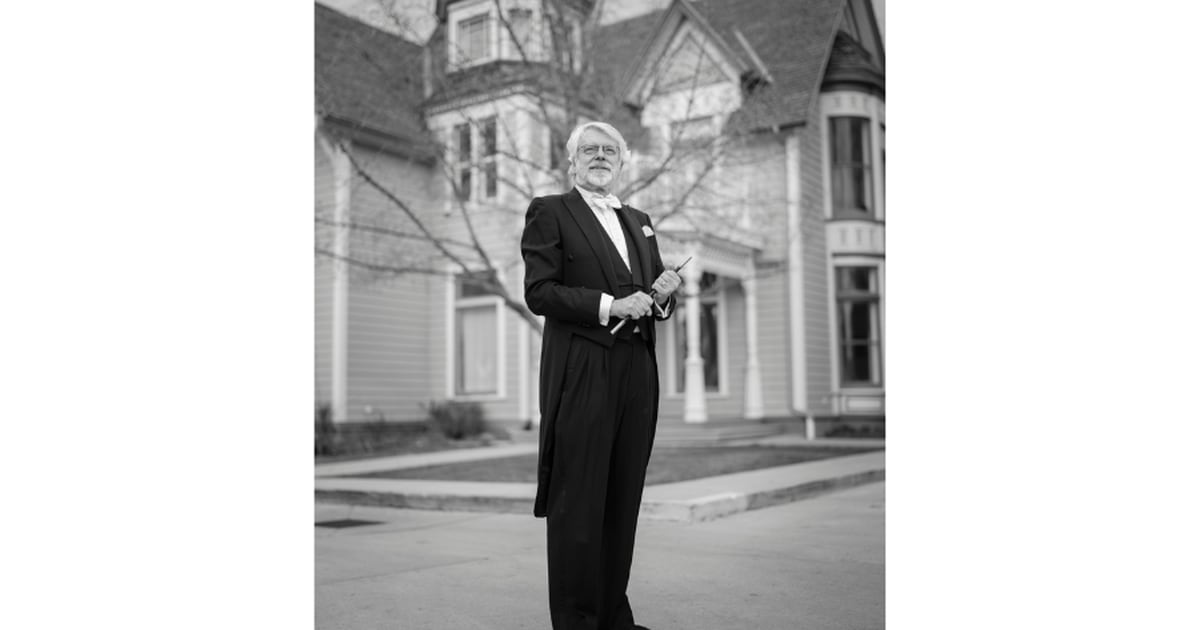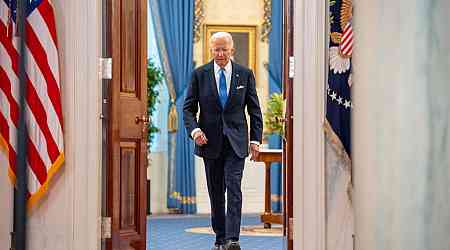Richard Hatch was searching the card catalog of the Sterling Memorial Library at Yale University, hunting for intriguing titles under the subject heading “Magic.” It was 1979, and Hatch was a young graduate student in physics, but he’d long nurtured an amateur’s passion for the conjuring arts and, on this day at least, he preferred to read about sleight of hand than quantum mechanics.
His rummaging stopped when he spotted a title called “Die Juden in der Zauberkunst.” Hatch had spent four years of his youth in Germany so he translated it instantly: “Jews in Magic.” The card said the book was written by someone named Guenther Dammann and published in Berlin in 1933.
He paused. A book about Jews in magic, from Germany, in the very year that the Nazis assumed power and started burning “un-German” books in bonfires across the country. It seemed obvious. This was an antisemitic tract, identifying Jews to make it easier for the government to persecute them and the public to shun them.
Awful, Hatch thought. He then looked for a magic book he actually wanted to read.
Hatch would go on to earn two graduate degrees in physics but left the field in 1983 after realizing that his ardor for magic had completely overwhelmed his interest in science. He became a full-time “deceptionist,” as he calls it. While he honed his craft and looked for gigs, he translated a 1942 German book about famed Austrian magician J.N. Hofzinser. That brought him to the attention of a collector of Judaica and magic books who urged him to translate a fascinating rarity he’d acquired: “Die Juden in der Zauberkunst.”
“That’s when I realized that the book was about the great contributions that Jews have made to magic,” Hatch said in an interview.
Dammann, it turns out, was a 23-year-old Jew and amateur magician, the son of a well-off banker, who lived with his parents and brothers in Berlin when he self-published his book. It was 100 pages long and, historians say, the first attempt to inventory the great Jewish magicians, both living and dead.
The book was an oddly timed exercise in ethnic pride and a singular artifact of a life cut short. In 1942, Dammann and nearly 800 others were transported on rail cars to Riga, Latvia, where, Nazi records show, they were shot upon arrival.
Hatch, who lives in semiretirement in a small town in northern Utah, finished his translation of “Jews in Magic” four years ago and is strategizing about how to get it published, with annotations and photographs. At 68, he is a kind of one-man historical preservation society dedicated to Dammann.
“There’s a saying that we all die three times,” Hatch said. “The first death is the physical one, when your heart stops beating. The second is when your body is consigned to fire or the grave. And the third is the last time someone utters your name. Life was so cruel and unfair to him, I just thought, it’s a worthy cause to keep Dammann’s name alive for as long as I can.”

Everyone Has a Theory
Since Dammann’s death, the ranks of Jewish conjurers has only grown. Among the notable: David Copperfield, David Blaine, Ricky Jay, Teller — who is the silent half of Penn & Teller — and Uri Geller, who, for the record, has long denied that his spoon bending is a trick. Gloria Dea, born Gloria Metzner, was the first magician to play Las Vegas. Max Maven, born Philip Goldstein, was one of the world’s most admired mentalists.
Why have Jews been so prominent in magic? In his book, Dammann does not speculate. So in January, I visited MagiFest, one of the country’s largest conventions of magicians, held annually in Columbus, Ohio. I went to hear Hatch give a lecture about Dammann, but the convention proved the ideal setting for an informal survey on the question.
MagiFest was three days of lectures and performances with more than 900 attendees, all gathered on the second floor of the Renaissance Hotel. Much of the action took place at a group of round tables where magicians, both professional and amateur, demonstrated and taught sleights and effects, mostly with playing cards. “Jamming,” as these informal sessions are called, went on until about 2 a.m. each night.
One of the attendees was Joshua Jay, who co-founded Vanishing Inc., the company that owns MagiFest, and who had just finished a three-week run at the Midnight Theater in Manhattan. He sat near the round tables one evening and shared a theory.
“In the U.S., part of it is that the explosion of Jews in magic happens at the same time that Jews are flooding into this country as immigrants at the turn of the century and many of the jobs with the government, with corporations were not open to Jews,” he said. “Being a magician was like being a tailor. You were self-employed, so it was safe.”
Others believe that magic, with its emphasis on books and learning, holds an inherent appeal to Jews. Asi Wind, an Israeli-born New Yorker whose off-Broadway show of card magic ran for 16 months, sees a link between his encounters with religion while growing up and his fascination with magic.
“I remember going to classes to hear rabbis talk and you’d hear a lot about mystery,” he said. “They would say, ‘Look, the Bible predicted this or that before science, before anybody else knew.’ It almost felt like I was reading a magic book. The Bible is a book about supernatural powers and a specific kind of knowledge — secret knowledge, the kind that reveals things we don’t yet know.”

Egg Bag Redux
Richard Hatch spent part of his adolescence in Frankfurt, Germany, because his father, a nuclear physicist, served as a civilian working for Naval intelligence in the late 1950s, debriefing scientists who had defected from East Germany. The younger Hatch initially gravitated to physics because he found his father’s work intriguing, but after four years of graduate studies at Yale, he ditched it all for magic. He loved nothing more, he explained, and by the late ‘70s, breakout stars like Doug Henning and David Copperfield had proven that careers in the field were financially viable.
“I thought I’d married a theoretical particle physicist,” said his wife, Rosemary Kimura Hatch, a professional musician. “But one day he came up to me and said, ‘I really want to try magic.’ And I said, ‘Well, if that’s your passion, give it a try.’ I was the bread winner the following year.”
Richard Hatch was raised as a Mormon but left the church years ago. Asked why he’s spent so much time studying a Jewish victim of the Holocaust, he first offered a go-to quip.
“My grandfather was a polygamist and his first wife was Jewish,” he said. “But my grandmother was the second wife. So I like to say I was nearly Jewish.”
More seriously, he said he was fascinated by the reaction to Nazism in Germany’s magic community, which quickly divided into Nazi sympathizers and Jews. And he found the story of Dammann’s life an irresistible mystery: Who was this guy? And why did he write a book about Jews and magic at one of the darkest moments in history?
Hatch answered those and other questions during a Friday afternoon at his presentation about Dammann at MagiFest. He was dressed in a blue suit and sported a gray beard, looking like a CEO who’d come to rev up the sales team.
He explained that Dammann’s interest in magic started when he was 12 or 13 and that a retired illusionist and family friend named Ernest Thorn, who would later turn up as an entry in “Jews in Magic,” became a mentor. At 21, Dammann joined the Magic Circle of Germany, a hybrid of professional society and fraternal organization, though there were women members, too. Inspired by the Who’s Who’s books he read, Dammann decided to assemble “Jews in Magic.”
He clearly understood the dangers of the project. As Hatch told the crowd of about 700, Dammann asked living professionals for permission to include them in the book, usually through the mail. Some apparently said no. Among the names omitted from the work is Arnold de Biere, dubbed the “Prince of Entertainers, entertainer of Princes,” who frequently toured Germany.
Among his best known pieces was the egg bag trick, a parlor magic staple in which an egg keeps appearing and disappearing in a black bag that has been turned inside out, slapped against a hand and inspected by the audience. Versions of the trick have been performed for centuries. David Leendert Bamberg, born in the late 18th century and part of the six-generation Bamberg dynasty from the Netherlands — Page 25 of Dammann’s book — had a version that ended with a live hen.
Hatch estimates that Dammann printed 500 copies of his book and that it sold poorly. The few contemporaneous magic publications that mentioned “Jews in Magic” — the copies were sent by Dammann, who handled publicity, too — were startled by its very existence. In 1933, Germany was becoming a dictatorship. By September, Jews were not allowed to perform onstage for non-Jewish audiences and the number of Jews in German universities had already been sharply curtailed. The notorious Nuremberg Laws, which stripped Jews of civil rights and citizenship, were two years away.

Dammann’s parents were both dead by 1937 — the causes are not known — and the family’s house had been emptied and seized by the following year. Gunther and his two brothers attempted to flee to Palestine.
“They tried to convert their assets, which were obviously less considerable than they had been,” Hatch told the audience at the MagiFest lecture, which he gave with a series of slides projected on a huge screen. “They were caught doing so. This is his younger brother’s mug shot.”
Gunther became a slave laborer at a Siemens factory in Berlin, where he put rubber coating on cables. None of the Dammann brothers survived the war.
Today, Hatch sustains the memory of those memorialized by Dammann with more than just historical research and lectures. About once a month, he performs at private homes, country club banquets or nightclubs, typically near his home or in Salt Lake City.
When scheduling allows, he appears with his wife and adult son, a violinist and pianist. Wearing white tie and tails, Hatch performs tricks that were sensations a century or two ago in an hourlong act that would have worked in any Victorian-age parlor.
One highlight is a version of the egg bag popularized by Max Malini, who billed himself as “The Conjurer of the Century” — see page 78 of “Jews in Magic.”
“The classics are classics,” Hatch said. “They’re a good place to start, and not a bad place to get stuck.”
This article originally appeared in The New York Times.
function onSignUp() { const token = grecaptcha.getResponse(); if (!token) { alert("Please verify the reCAPTCHA!"); } else { axios .post( "https://8c0ug47jei.execute-api.us-east-1.amazonaws.com/dev/newsletter/checkCaptcha", { token, env: "PROD", } ) .then(({ data: { message } }) => { console.log(message); if (message === "Human























